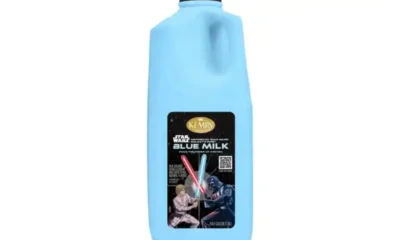Connect with us
Published
1 year agoon

Many consumers will attest that they enjoy partaking in cannabis over alcohol, and trends over the years of legalization within the U.S. have also shown more people are turning to cannabis over alcohol. Now, a new federally funded study shows that, among states with legal cannabis, people experience lower rates of alcohol use disorder compared to residents of states where cannabis is still criminalized.
The study, published in the journal Psychological Medicine, used a longitudinal, co-twin control design with 240 pairs of twins, where one twin lived in a state with legal cannabis and the other did not. Twins were first assessed in adolescence prior to the first states’ cannabis legalization in 2014; they are currently between ages 24 and 49.
Researchers ultimately found that overall alcohol consumption didn’t significantly differ between twins, but the individuals living in states with legal cannabis were “less likely to risk harm while under the influence of alcohol” than their twin residing in a state that had yet to enact adult-use cannabis laws.
“Recreational legalization was associated with increased cannabis use and decreased AUD symptoms but was not associated with other maladaptations,” the researchers wrote. “These effects were maintained within twin pairs discordant for residence.”
Alcohol use disorder (AUD) is a medical condition “characterized by an impaired ability to stop or control alcohol use despite adverse social, occupational or health consequences,” as stated by the National Institute on Alcohol Abuse and Alcoholism (NIAAA). It encompasses conditions that may also be referred to as alcohol abuse, alcohol dependence, alcohol addiction and alcoholism and exists on a spectrum.
While it’s considered a brain disorder, the NIAAA says a person’s risk for developing AUD depends in part on how often, how much and how quickly they consume alcohol. A number of other risk factors come into play, including drinking at an early age, genetics and family history of alcohol issues, mental health conditions and a history of trauma.
This was, in part, why researchers chose a co-twin model for the study, in order to control for factors around socialization and genetics, along with earlier cannabis use and alcohol use disorder symptoms.
While the findings show promise for potentially curbing a person’s risk for developing or experiencing AUD, researchers said that the data is “difficult to interpret and merits additional investigation in future work.”
Regarding potential risks of cannabis legalization, the authors also indicate that cannabis legalization was not associated with an increase in cannabis use disorder, though it could be linked to greater use of tobacco, cannabis and financial distress.
Researchers theorized that one reason cannabis legalization was not linked to an increase in psychosocial disorders was because these laws increase cannabis consumption among infrequent or casual users, instead of increasing use among those who were already consuming cannabis on a regular basis prior to legalization.
The study was supported through grants from the National Institutes of Health, and authors indicated that the results were reassuring in relation to the concerns of the public surrounding cannabis legalization and its impacts on public health.
Regarding limitations, the authors acknowledged that they were unable to evaluate all outcomes often associated with cannabis use, like physical health, sleep and motivation, or diagnoses like depression and bipolar disorder. They also noted their participant pool was “an adult community sample broadly characterized by low levels of substance use and psychosocial dysfunction,” ultimately limiting their ability to generalize the relationship between legalization, potential outcomes and risk factors for the highest-risk individuals.
The study mirrors trends around the country, specifically pinpointing the increase in cannabis use and the decrease in alcohol use along with legal cannabis, especially among youth.


German Authorities to Ban Cannabis Smoking, Vaping at Festivals Including Oktoberfest


Illinois Governor Cites Cannabis Reform While Campaigning for Biden


States With Legal Weed See Increase in College Applications


‘Star Wars’ Blue Milk Released from Multiple Brands Ahead of May the 4th


Stoners Still Gathered at Hippie Hill for 4/20 Celebration Despite Event Cancellation


Ohio Company Signs Deal To Grow Hemp for Bioplastic
